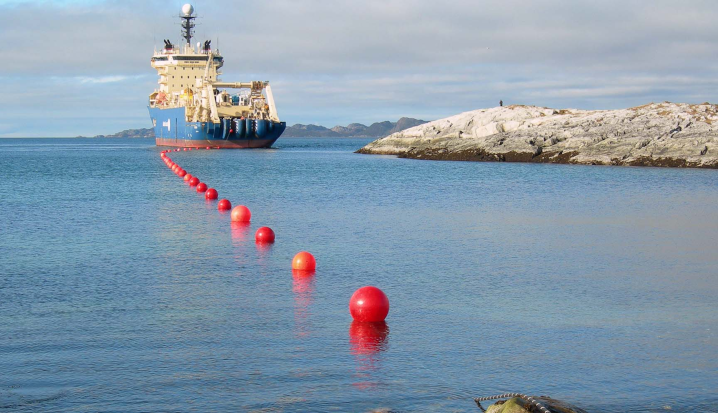 INFRA
INFRA
 INFRA
INFRA
 INFRA
INFRA
Google LLC and Facebook Inc. are participating in a project to build a new 7,450-mile subsea cable that will connect Japan, Taiwan, Guam, the Philippines, Indonesia and Singapore.
The companies announced the project this morning. The cable is called Apricot and will be capable of transporting 190 terabits of data per second when it comes online in 2024.
Apricot will use a system known as a reconfigurable optical add-drop multiplexer to transport users’ data from one end of the cable to another. It’s a sophisticated version of the traditional multiplexer, a device that has long been an essential component of internet networks.
A multiplexer is a device that makes it possible to simultaneously transmit multiple signals over the same wire. In the case of subsea internet cables, those simultaneous signals are streams of data traffic from users and devices. Data traffic travels over subsea internet cables in the form of light beams.
There are multiple ways to transport multiple streams of information simultaneously. One common approach is space-division multiplexing, wherein the streams of information are each transmitted via a separate network link inside a cable to prevent them from interfering with another.
Another approach is wavelength-division multiplexing. It provides the ability to send multiple streams of information over a single network link, rather than over separate links as with space-division multiplexing, while avoiding interference. That’s achieved by selecting different wavelengths for the light beams that carry information. Light beams with different wavelengths can be at the same place at the same time, which means there’s no interference.
The reconfigurable optical add-drop multiplexer that will power the Apricot cable has additional features not included in more traditional multiplexers.
Data that arrives at its destination after a trip through a subsea cable can’t simply be forwarded to users’ devices. Rather, the data must first be turned into a form that is easier to transport over internet providers’ infrastructure. Network operators usually perform the task with a technique called demultiplexing, which essentially reverses the modifications that the multiplexer made to the data earlier so it could be transported over the cable. The task requires a fairly large amount of electronic equipment to perform.
Internet cables equipped with a reconfigurable optical add-drop multiplexer skip the demultiplexing phase. They achieve the same result with a different method that requires considerably less hardware, which increases the overall efficiency of the internet cable.
A reconfigurable optical add-drop multiplexer is also more versatile than traditional multiplexers. Its configuration settings can be adjusted on an ad hoc basis, which allows engineers to continuously make tweaks in order to optimize the rate at which data can be transferred.
For Google, Apricot will complement the Echo subsea internet cable it’s currently building in collaboration with several other companies. Echo is set to connect the U.S. with Indonesia and Singapore.
The two cables will provide “a significantly higher degree of resilience for Google Cloud and digital services,” said Bikash Koley, the head of Google Global Networking and head of technology and strategy for Google Cloud for Telecommunications. “Together they’ll provide businesses and startups in Asia with lower latency, more bandwidth and increased resilience in their connectivity between Southeast Asia, North Asia and the United States.”
Facebook is involved not only in the construction of Apricot but is also, together with Google, is part of the group building the Echo cable. Moreover, the company earlier this year announced plans for a third cable dubbed Bifrost. It will connect the U.S. with Indonesia and Singapore similarly to Echo.
Google and Facebook are both among the world’s largest operators of subsea internet cables. Fellow tech giant Microsoft Corp. has taken the idea of placing technology infrastructure underwater one step further by developing submarine data centers.
Support our mission to keep content open and free by engaging with theCUBE community. Join theCUBE’s Alumni Trust Network, where technology leaders connect, share intelligence and create opportunities.
Founded by tech visionaries John Furrier and Dave Vellante, SiliconANGLE Media has built a dynamic ecosystem of industry-leading digital media brands that reach 15+ million elite tech professionals. Our new proprietary theCUBE AI Video Cloud is breaking ground in audience interaction, leveraging theCUBEai.com neural network to help technology companies make data-driven decisions and stay at the forefront of industry conversations.